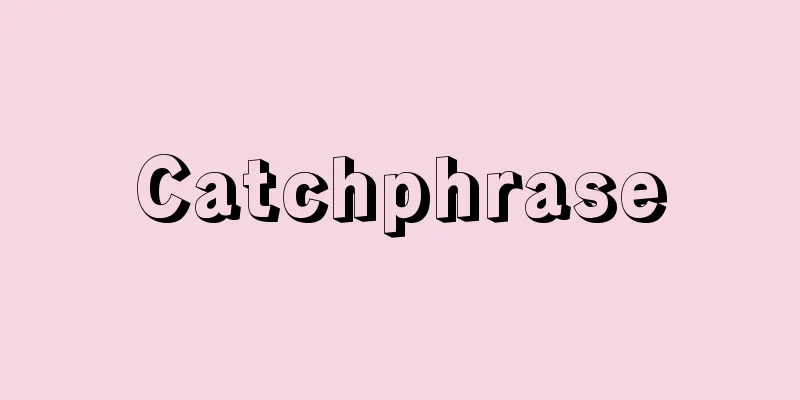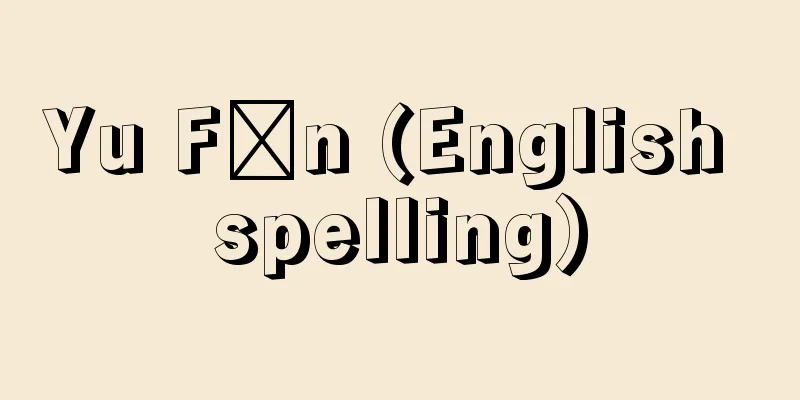College baseball - daigaku yakyuu

|
College students enjoy baseball as one of their club activities, and organize leagues to play matches between universities. [Junji Kanda and Hiroshi Morioka, June 23, 2020] historyAfter baseball was introduced to the First University District First Middle School (the predecessor to the University of Tokyo) in 1872 (Meiji 5), baseball clubs were established one after another at Aoyama Gakuin, Keio Gijuku and other schools between 1883 and 1885. In particular, the founding of the baseball club at First High School (the predecessor to the College of Arts and Sciences at the University of Tokyo) in 1888 triggered an extraordinary rise in baseball enthusiasm among students, and with its invincible nature, a period in Japanese baseball history was created known as the "First High School Era." In 1896, First High School's defeat of the Yokohama Foreign Club was a major event at the time. After the Waseda University baseball club was established in 1901 (Meiji 34), the center of university baseball shifted to the Waseda-Keio era. On November 21, 1903, the first Waseda-Keio match was held at Mita Tsunamachi Baseball Stadium, with Keio winning 11-9. This match marked the beginning of the so-called "Waseda-Keio game," which would later divide fans all over the country. However, the Waseda-Keio game was suddenly canceled in 1906 due to a cheering squad issue, leading to a 19-year hiatus. The Meiji University baseball club filled the void left by the Waseda-Keio no-match. Meiji University established a club in 1911, and in 1914 (Taisho 3) started the Waseda-Keio-Meiji Three University League, laying the foundation for today's Tokyo Big Six League. Hosei University joined in 1917, followed by Rikkyo University in 1921, and in 1925 the University of Tokyo applied to participate, and the Waseda-Keio no-match was resolved, and thus the Big Six League was born in both name and reality. This six-university league continued until the fall season of 1942 (Showa 17), but was suspended for three years from 1943 to 1945 as World War II intensified. With the end of the war, calls were made for the revival of the six-university league, and it was resumed for the spring season of 1946 (Showa 21). The Toho University Baseball League began league matches in the spring of 1931, and the Kansai Six Universities Baseball League in the fall of the same year. However, like the Tokyo Six Universities League, league matches were suspended for three years during World War II. After the war, both leagues followed the same path as the Tokyo Six Universities League and resumed league matches in the spring of 1946. After the war, both the Kansai Six University League and the Tohto University League took the lead in university baseball, just like the Tokyo Six University League. From 1947 to 1951, the winners of the autumn tournaments of these three leagues competed against each other in a match to determine the champion of All-Japan University Baseball (the University Baseball Championship), but the championship was put on hold three times due to close competition, with only Hosei University winning in 1948 and Waseda University winning in 1950. In 1952, the first All-Japan University Baseball Championship was held to determine the best team in Japan in both name and reality, and the University Championship was abolished after five years. The All-Japan University Baseball Championship divided the new universities into five districts and held preliminary rounds, with the five representative teams from these districts competing against the three representative teams from the existing Tokyo Six University League, Tohto University League, and Kansai Six University League in a tournament-style championship. Keio University won the first championship. In the 1956 University Championship, Kansai University won its first championship, defeating Waseda University, representing the Tokyo Big Six League, which had won the tournament four years in a row since its inception, and Nihon University (Nihon University), representing the Toho University League, with the excellent pitching of Murayama Minoru (later to play for Hanshin), and made the name of the Kansai Big Six a household name. In 1962, the Kansai Big Six League merged universities in the Kinki region to form the Kansai University Union, but in 1982 the Kansai University Union was dissolved, and the five Kansai university baseball leagues (Kansai Student, Kansai Big Six, Kinki, Keishiga, and Hanshin) began to operate in parallel. As the number of member schools increased, the Tohto University League grew in strength, and although it was overtaken in the championship by the representative of the Kansai Six Universities, it has won the University Championship 24 times (as of 2019), second only to the Tokyo Six Universities' 26 times. In analogy with the Pacific League being called the powerful league and the Central League being called the popular league in professional baseball, the Tohto League was also called the powerful league and the Tokyo Six Universities being called the popular league. The All-Japan University Baseball Championship also gradually narrowed the gap in ability, and after about 10 years, the level of all participating teams improved, and it became a famous event in the student baseball world comparable to the National High School Baseball Championship at Koshien. Finally, in the 18th tournament in 1969, Tokai University, representing the Metropolitan University Baseball Association, won its first championship. Following Tokai University's first victory, Chukyo University won the championship the following year in 1970, ending the era in which the Tokyo Big 6, Tohto University, and Kansai Big 6 leagues dominated the university baseball world. In the Heisei era, the level of regional universities improved, with Tohoku Fukushi University of the Sendai Big 6 Baseball League winning in 1991 (Heisei 3), Nippon Bunri University of the Kyushu Area University Baseball League in 2003 (Heisei 15), Jobu University of the Kanto Koshin Student Baseball League in 2013, and Chukyo Gakuin University of the Tokai Area University Baseball League winning in 2016, and the quality of university baseball became more uniform. As a result, the number of players going on to become professional players is increasing, and in addition to Tohoku Fukushi University, which has produced many professional players, Fuji University, Jobu University, Soka University, Aichi Gakuin University, Chukyo Gakuin University, Kyushu Sangyo University, Kyushu Kyoritsu University, and Nippon Bunri University are known as leading local universities. As of 2019 (Reiwa 1), the All-Japan University Baseball Association (a public interest incorporated foundation) which co-hosts the All-Japan University Baseball Championship with the Yomiuri Shimbun, consists of 26 leagues: the Sapporo Student Baseball League, the Hokkaido Student Baseball League, the North Tohoku University Baseball League, the Sendai Six University Baseball League, the South Tohoku University Baseball League, the Chiba Prefecture University Baseball League, the Kanto Koshin Student Baseball League, the Tokyo New University Baseball League, the Tokyo Six University Baseball League, the Tohto University Baseball League, the Metropolitan University Baseball League, the Kanagawa University Baseball League, the Aichi University Baseball League, the Tokai Area University Baseball League, the Hokuriku University Baseball League, the Kansai Student Baseball League, the Kansai Six University Baseball League, the Kinki Student Baseball League, the Keiji University Baseball League, the Hanshin University Baseball League, the Hiroshima Six University Baseball League, the Chugoku Area University Baseball League, the Shikoku Area University Baseball League, the Kyushu Six University Baseball League, the Fukuoka Six University Baseball League, and the Kyushu Area University Baseball League, with a total of 380 member universities. Since 1999, representatives from all federations have been able to advance to the University Baseball Championship, and in 2017 the Kyushu District University Baseball Federation was divided into two regions, North and South, with the 27 winning universities from each federation competing for the title of Japan's best. The Japan-US Collegiate Baseball Championship has been held since 1972. The tournament sees the strongest teams from each country organized around players from the winning teams in their domestic college baseball championships compete in a seven-round series. For the first tournament, Japan invited the US, and for the second tournament in 1973, the US invited Japan, and so on. The tournament is held every year from the end of June to July, with teams from the opposing countries alternately invited. Japan won the first tournament. From the 15th tournament, the format was changed to a best-of-five format and the tournament period was shortened. As of 2019, Japan has won the tournament 19 times and the US has won 24 times. [Junji Kanda and Hiroshi Morioka, June 23, 2020] [Reference] | |Source: Shogakukan Encyclopedia Nipponica About Encyclopedia Nipponica Information | Legend |
|
大学生がクラブ活動の一つとして野球を楽しみ、大学どうしが試合をするため連盟を組織して試合をすること。 [神田順治・森岡 浩 2020年6月23日] 歴史1872年(明治5)第一大学区第一番中学(東京大学の前身)に野球が伝えられてから、1883~1885年には青山学院、慶応義塾などをはじめ、続々と野球部が創設され始めたが、とくに1888年第一高等学校(東京大学教養学部の前身)野球部の設立を契機に、学生間の野球熱は異常な高まりをみせ、その無敵ぶりとともに、日本野球史上「一高時代」といわれる一時期を現出した。1896年一高が横浜外人クラブを破ったことは当時の大事件であった。1901年(明治34)早稲田(わせだ)大学に野球部が設立されてからは、大学野球の中心は早慶時代に移行した。1903年11月21日、三田綱町(みたつなまち)球場で初の早慶対抗試合が行われ11対9で慶応が勝利を収めたが、この試合こそ、その後満天下のファンを二分するようになったいわゆる「早慶戦」の開幕を告げるものである。しかし、早慶戦は、1906年応援団問題から突然中止され、19年間もの空白時代を迎えた。この早慶不戦の空白を埋めて登場したのが明治大学野球部である。明治大学は1911年に部を新設し、1914年(大正3)に早慶明三大学リーグ戦を開始、ここに今日の東京六大学リーグ戦の基が開かれた。1917年には法政大学が加わり、ついで1921年に立教大学が加入、1925年になると東京大学が参加を申し込み、それに早慶の不戦も解決して、ここに名実ともに備わった六大学リーグ戦が開始された。この六大学リーグ戦は1942年(昭和17)秋のシーズンまで継続して行われたが、第二次世界大戦の激しくなった1943~1945年の3年間は中止された。終戦とともに六大学リーグの復活が叫ばれ、1946年(昭和21)の春のシーズンには再開された。 東都大学野球連盟は1931年の春から、また関西六大学野球連盟は同年秋からリーグ戦を開始した。しかし東京六大学リーグと同様に第二次世界大戦中3年間リーグ戦を中止。戦後はともに東京六大学と軌を一にし、1946年春のリーグ戦から再開された。 関西六大学、東都大学の両連盟は、戦後、東京六大学と同様に大学野球のリーダーシップをとり、1947年から1951年までこの3連盟の秋の優勝者が実力を競って、全日本大学野球の王者を決定する試合(大学野球王座決定戦)を行ったが、実力伯仲で優勝が預かりになること三度、1948年に法政大学、1950年に早稲田大学が優勝しただけであった。1952年から名実ともに日本一を決める第1回全日本大学野球選手権大会が開催されることになり、大学王座決定戦は5年で解消された。全日本大学野球選手権は、新制大学を全国5地区に分けて予選を実施、その代表5チームと既設の東京六大学、東都大学、関西六大学の3連盟の代表3チームとでトーナメント式の争覇試合を実施したものである。第1回の覇権は慶応大学が獲得した。 1956年の大学選手権大会では、大会開始以来4年連続優勝していた東京六大学連盟を代表する早大と、東都大学連盟の日大(日本大学)を、村山実(のち阪神)の好投で連破して、関西大学が初優勝、関西六大学の名をあげた。1962年に関西六大学連盟は近畿地区の大学を合同して関西大学連合に一本化したが、1982年に関西大学連合を解散、関西の五つの大学野球連盟(関西学生、関西六大学、近畿、京滋、阪神)が並立の状態で運営されるようになった。 東都大学連盟は、加盟校の増加とともに実力をつけ、大学選手権での優勝は関西六大学の代表に先を越されたが、優勝回数は東京六大学の26回に次ぐ24回を記録している(2019年時点)。プロ野球において実力のパ・リーグ、人気のセ・リーグと称せられるのになぞらえて、実力の東都、人気の東京六大学ともいわれた。 全日本大学野球選手権大会も、しだいに実力の差が少なくなり、10年を経過するころから大会参加全チームのレベルアップがみられ、甲子園の全国高等学校野球選手権大会と比肩される学生球界の名物となった。そして1969年の第18回大会で、ついに首都大学野球連盟の代表、東海大学が初優勝を果たした。 東海大学の初優勝に次いで翌1970年には中京大学が優勝し、大学野球界は、東京六大学、東都大学、関西六大学の3連盟で優勝を独占する時代は終わった。平成に入ると、1991年(平成3)に仙台六大学野球連盟の東北福祉大学、2003年(平成15)に九州地区大学野球連盟の日本文理大学、2013年に関甲新学生野球連盟の上武大学、2016年には東海地区大学野球連盟の中京学院大学が優勝するなど、地方大学のレベルが向上し、大学野球の実力は平均化した。 その結果、プロに進む選手も地方大学出身者が増加し、数多くのプロ選手を輩出している東北福祉大学のほか、富士大学、上武大学、創価大学、愛知学院大学、中京学院大学、九州産業大学、九州共立大学、日本文理大学などが地方の有力大学として知られる。 2019年(令和1)時点で全日本大学野球選手権大会を読売新聞社と共催する(公益財団法人)全日本大学野球連盟には、札幌学生野球連盟、北海道学生野球連盟、北東北大学野球連盟、仙台六大学野球連盟、南東北大学野球連盟、千葉県大学野球連盟、関甲新学生野球連盟、東京新大学野球連盟、東京六大学野球連盟、東都大学野球連盟、首都大学野球連盟、神奈川大学野球連盟、愛知大学野球連盟、東海地区大学野球連盟、北陸大学野球連盟、関西学生野球連盟、関西六大学野球連盟、近畿学生野球連盟、京滋大学野球連盟、阪神大学野球連盟、広島六大学野球連盟、中国地区大学野球連盟、四国地区大学野球連盟、九州六大学野球連盟、福岡六大学野球連盟、九州地区大学野球連盟の26連盟があり、380大学が加盟している。なお、1999年からすべての連盟の代表が大学野球選手権に進めるようになり、2017年からは九州地区大学野球連盟が南北の2地区に分かれて、各連盟で勝ち抜いた27大学で日本一を争っている。 1972年からは日米大学野球選手権大会が開催されている。これは両国の国内大学野球選手権大会に優勝したチームの選手を中心に、それぞれ最強チームを編成し、7回戦を行うものである。第1回は日本側がアメリカを招き、1973年の第2回はアメリカが日本を招くというように、交互に相手国チームを招待して、毎年6月末から7月にかけて挙行する。第1回は日本が優勝。第15回大会から試合方法を5回戦制に改め大会期間を短縮した。2019年まで日本が19回、アメリカが24回優勝している。 [神田順治・森岡 浩 2020年6月23日] [参照項目] | |出典 小学館 日本大百科全書(ニッポニカ)日本大百科全書(ニッポニカ)について 情報 | 凡例 |
>>: University Special Officer - Daigaku Besso
Recommend
Hug seat - Hug seat
…In the Edo Shogunate, the doshin belonging to va...
Fan Ning (English spelling)
[Raw] Hamkang 5 (339) [Died] Takayasu 5 (401) A Ch...
Rudolf Clausius
German physicist. Born on January 2nd in Köslin, ...
Hodēgetria (English spelling)
...The great development of the iconography occur...
Isostilbene - Isostilbene
...There are two types of isomers, ( E )-isomer (...
MR Head
...Thin film coils, which have been used since ar...
Chinese reading - Kanbunkundoku
〘noun〙 Reading Chinese texts in a Japanese context...
Mesohippus
…At this time, unlike other odd-toed ungulates, t...
Memanbetsu [town] - Memanbetsu
A former town in Abashiri County, eastern Hokkaido...
Saccocirrus labilis (English spelling)
… [Minoru Imajima]. … *Some of the terminology th...
Musophagidae; turacos
A general term for birds in the family Corythaeida...
Gas exchange
The process by which a living organism takes in ox...
British Embassy Arson Incident
In December 1862 (Bunkyu 2), pro-imperial and ant...
Two ways to buy a beautiful woman - Keiseikai Futasujimichi
A sharebon (Japanese comedy book). One volume. Wr...
Air route
A route is a passageway with a certain width (pro...









